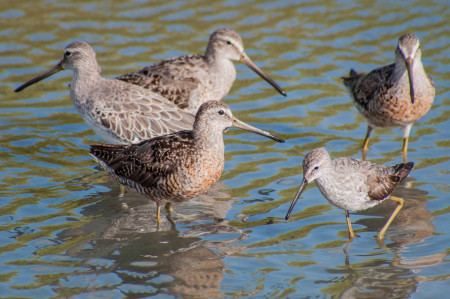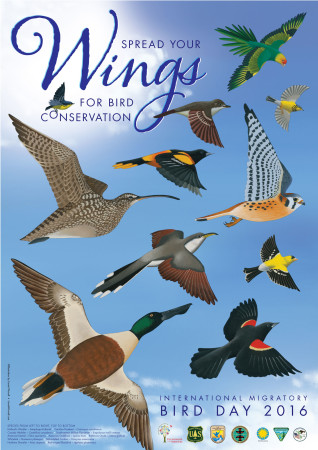
There’s a rustling in the hedgerow, and a fluttering in the branches. In the Caribbean islands, we are starting to hear different voices and our gardens and landscapes are filled with bright new colors. Our “winter visitors” are arriving, and we welcome them every year.
Many may be surprised to learn that the Caribbean is a winter home for dozens of different migratory bird species. Now in its 26th year, International Migratory Bird Day (IMBD) highlights the amazing story of these birds and the importance of protecting them. While IMBD events happen across the Western Hemisphere throughout the year, most Caribbean events happen in the October, a particularly busy month for migratory birds in the West Indies.
Environment for the Americas (EFTA) coordinates IMBD across the Western Hemisphere. BirdsCaribbean is the regional organizer, coordinating all kinds of activities throughout the islands. Refuges, parks, museums, schools, botanical gardens and protected areas host events that reach about 100,000 people each year just in the Caribbean.

The 2016 theme is Spread Your Wings for Bird Conservation, in recognition of the Centennial of the U.S. Migratory Bird Treaty, which makes it unlawful to pursue, hunt, take, capture, kill or sell migratory birds. The treaty does not discriminate between live or dead birds, and also grants full protection to any bird parts including feathers, eggs and nests. Over 800 species are currently on the list of protected birds.
This year IMBD partners seek to highlight how laws, treaties and protected areas help conserve our migratory birds, and what the average citizen can do to help. The beautiful 2016 IMBD poster shows eleven migratory bird species in flight, ten of which have benefited from conservation laws. One of these species is the Whimbrel, one of the widest-ranging shorebirds in the world that can fly for 4,000 kilometers non-stop. The poster was designed by Canada-based artist Lionel Worrell, who spent his early years in the Caribbean.
These delightful birds, that travel so far every year, represent a significant part of the biodiversity of the Americas. They are cause for celebration! BirdsCaribbean invites its friends and partners across the region to engage in activities that will not only help these birds continue to spread their wings across the ocean, for example by preserving their habitats. The IMBD events also aim to educate and inform Caribbean residents (young and not so young) on their remarkable lives.
How many migratory birds can you find on your island this winter? Let’s spread our wings and celebrate our remarkable feathered friends!

I would like to link me to the protection of migratory birds in my country. I published my observations in October in eBird and in these functions I have seen the interest for people to capture many of these birds, I know some species only in cages and not in nature in Cuba.
Hola Sergio, thank you for your interest in protecting migratory birds in Cuba! We are aware of the caged bird issue in Cuba and several persons in our organization in Cuba have been working to raise awareness about this. They are also organizing education campaigns and events about migratory and endemic birds in Cuba for International Migratory Bird Day and the Caribbean Endemic Bird Festival and another program called BirdSleuth Caribbean. if you are interested in getting involved, please contact our regional Bird Festival Coordinator, based in Puerto Rico – Ingrid Flores (imbdcoordinator.pr@gmail.com) and she will put you in contact with local coordinators in Cuba.
We welcome your interest and help with protection of migratory birds in Cuba! There is certainly a challenge with caged birds in Cuba, however, there are several persons that have worked on campaigns to raise awareness about this issue. Please contact Nils Navarro and also Alieny Gonzalez and Ianela Garcia, who organize education and awareness events for International Migratory Bird Day and the Caribbean Endemic Bird Festival (I will send their contact information via email).